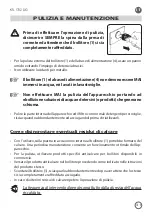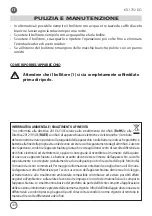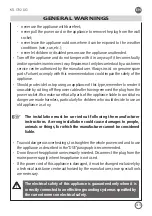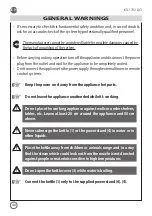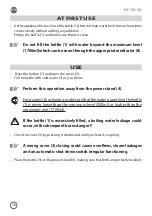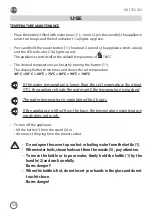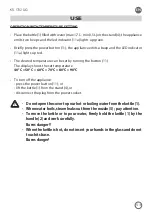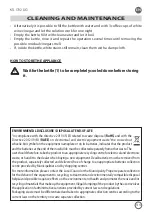
55
KTL 1702 DG
EN
• Alternatively it is possible to fill the kettle with water and with 3 coffee cups of white
wine vinegar and let the solution work for one night.
• Empty the kettle, fill it with clean water and let it boil.
• Empty the kettle, rinse it and repeat the operation several times until removing the
possible residual vinegar smell.
• If, inside the kettle, white stains still remain, clean them with a damp cloth.
HOW TO STORE THE APPLIANCE
Wait for the kettle (1) to be completely cooled down before storing
it.
CLEANING AND MAINTENANCE
ENVIRONMENTAL DISCLOSURE / DISPOSAL AT END-OF-LIFE
“In compliance with the directive 2011/65/EU related to waste disposal (
RoHS
)
and with the
Directive 2012/19/EU (
RAEE
) on electronical and electric equipment waste” the crossed out
wheelie bin symbol on the equipment nameplate or on its batteries, indicates that the product
and the batteries at the end of their useful life must be collected separately from other waste. The
user should therefore, take the product to an appropriate recycling centre for electrical and electronic
waste, or hand it to the dealer when buying a new equipment. Dead batteries must be removed from
the product, separately collected and delivered free of charge to an appropriate batteries collection
centre provided by Municipalities and by shopping centres.
For more information please contact the Local Council or the Municipality. Proper separate collection
for the deliver of the equipment to recycling, to treatment and environmentally compatible disposal
helps avoid possible negative effects on the environment and health and promotes the reuse and/or
recycling of materials that make up the equipment. Illegal dumping of the product by the user involves
the application of administrative sanctions provided by current laws and regulations.
Packaging waste must be differentiated and taken to appropriate collection centres according to the
current laws on the territory on waste separate collection.

